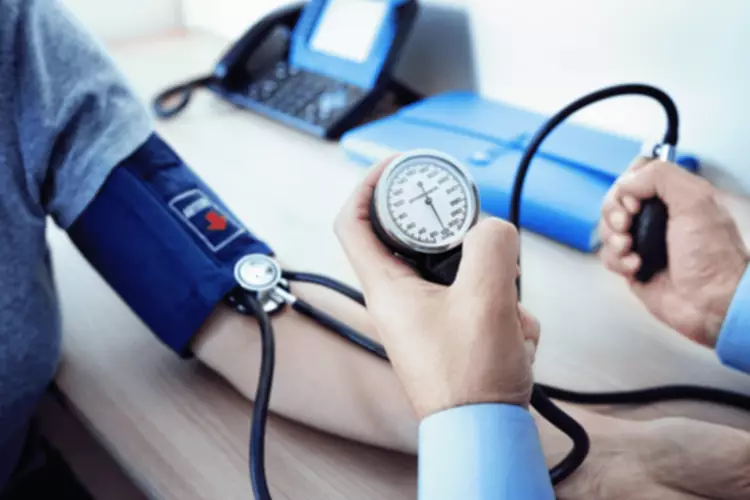In general, barbiturates can be thought of as so-called brain relaxers. The effects of barbiturates and alcohol are very similar, and when combined can be lethal. Pain medicines, sleeping pills, and antihistamines also cause symptoms similar to those of barbiturates. In people with anxiety and other conditions marked by increased neural activity, barbiturates help to calm those processes. Small increases in barbiturate drug use can easily result in an overdose.
Barbiturates are also highly addictive and there is a high chance of becoming emotionally and physically dependent on them if a person takes them for more than a couple of weeks. In addition, tolerance quickly develops with their use (within two weeks). This is when the same dose no longer gives the same effect, and a dosage increase is needed to ease symptoms again.
Further, barbiturates are relatively non-selective compounds that bind to an entire superfamily of ligand-gated ion channels, of which the GABAA receptor channel is only one of several representatives. This Cys-loop receptor superfamily of ion channels includes the neuronal nACh receptor channel, the 5-HT3 receptor channel, and the glycine receptor channel. However, while GABAA receptor currents are increased by barbiturates (and other general anesthetics), ligand-gated ion channels that are predominantly permeable for cationic ions are blocked by these compounds.
- When you call our helpline, you’ll be connected with a representative who can assist you in finding mental health and addiction treatment resources at any of the Ark Behavioral Health addiction treatment facilities.
- When barbiturates are used in anesthesia, supervision by anesthetics and certified registered nurse anesthetists is necessary.
- In people with anxiety and other conditions marked by increased neural activity, barbiturates help to calm those processes.
- Intermediate-acting barbiturates reduce time to fall asleep, increase total sleep time, and reduce REM sleep time.
Your doctor may gradually lower your dose over a period of time to minimize dangerous withdrawal complications. Barbiturates became popular during the 1960s and 1970s in treating seizures, sleep problems, and anxiety. Their use for recreational purposes also increased during this period. Some of the barbiturates may be used before surgery to relieve anxiety or tension. In addition, some of the barbiturates are used as anticonvulsants to help control seizures in certain disorders or diseases, such as epilepsy. Barbiturates may also be used for other conditions as determined by your doctor.
Report Problems to the Food and Drug Administration
The use of barbiturates declined after the introduction of benzodiazepines. These medicines are available only with your doctor’s prescription. We do not receive any compensation or commission for referrals to other treatment facilities. Addiction Resource aims to provide only the most current, accurate information in regards to addiction and addiction treatment, which means we only reference the most credible sources available. These neurotransmitters have an inhibitory function, which slows down activity in the brain.
Acting cautiously can help avoid accidental poisoning or recreational misuse of these medications, both of which can have deadly consequences. In 1971, the Convention on Psychotropic Substances was signed in Vienna. Among that group of drugs are the barbiturates amobarbital, butalbital, cyclobarbital, and pentobarbital. In the late 1950s and 1960s, an increasing number of published reports of barbiturate overdoses and dependence problems led physicians to reduce their prescription, particularly for spurious requests. This eventually led to the scheduling of barbiturates as controlled drugs.
Key Facts About Barbiturates
While barbiturates are useful for the above listed, some of these uses are less common in certain countries. For example, barbiturates are less common for pre-anesthesia in the United States because many newer drugs are more effective and have fewer side effects. Low doses of barbiturates can lower anxiety levels and relieve tension.
Indications for barbiturates
The easiest way to lookup drug information, identify pills, check interactions and set up your own personal medication records. They enhance the action of GABA, a neurotransmitter that inhibits the activity of nerve cells in the brain. You’ll soon start receiving the latest Mayo Clinic health information you requested in your inbox. Barbiturates should not be used for anxiety or tension caused by the stress of everyday life. In general, the person will have an IV started and blood will be drawn. An ECG (electrocardiogram) will be performed to evaluate the person’s heart rhythm.
For the most part, healthcare providers often prescribe benzodiazepines before trying a barbiturate. Combining benzodiazepines and barbiturates can be very dangerous, recovery motivation ways to get motivated to achieve sobriety so you should never combine them unless a doctor prescribes them this way. Tolerance to the mood-altering effects of barbiturates develops rapidly with repeated use.
The barbiturates have been used to treat insomnia (trouble in sleeping); but if they are used regularly (for example, every day) for insomnia, they are usually not effective for longer than 2 weeks. The barbiturates have also been used to relieve nervousness or restlessness during the daytime. However, the barbiturates have generally been replaced by safer medicines for the treatment of insomnia and daytime nervousness or tension. The doctor cannot give appropriate treatment for barbiturate misuse over the telephone.
The Misuse of Drugs Act classifies barbiturates as class B drugs, which means that these drugs can be bought in accordance with a doctor’s prescription; however, any other form of possession or supply of barbiturates is considered an offense. The maximum penalty that a person can receive for any unauthorized possession of barbiturates is 5 years in prison and a fine for possession. As a person uses barbiturates more, the difference between a dose that causes the desired effect and that of a fatal overdose becomes narrower. This makes overdoses more common in long-term use such as for more than 2 weeks. How quickly barbiturates act and how long their effects last can vary. They can be classified as ultra short-, short-, intermediate-, and long-acting.
Barbiturates and benzodiazepines aren’t the same types of medications, but they’re very similar. They both can stop seizures, cause you to relax and feel less anxious, or can help you feel drowsy and fall asleep when you receive general anesthesia. Most barbiturates aren’t for long-term use, so you might need to see your healthcare provider for follow-up. That will let them determine if you still need treatment or if other options will work better. Hypnotics make you drowsy (their name comes from the word “hypnos,” which means “sleep” in Greek). Babies born to women who have taken barbiturates during pregnancy can be born addicted to barbiturates and suffer withdrawal symptoms.
With regular use, tolerance to the effects of barbiturates develops. Research shows tolerance can develop with even one administration of a barbiturate. It is considered one of the most dangerous withdrawals of any known addictive substance. Similarly eco sober house review to benzodiazepines, the longer acting barbiturates produce a less severe withdrawal syndrome than short acting and ultra-short acting barbiturates. Withdrawal symptoms are dose-dependent with heavier users being more affected than lower-dose addicts.
People who are withdrawing may experience anxiety, disorientation, and visual hallucinations. If untreated, this withdrawal can progress to high fever, heart failure, and eventually death. The effects and dangers of barbiturate use increase greatly if they are taken with alcohol. Because of its relaxing effects on many of the body’s organs, long-term barbiturate use can lead to breathing problems and pneumonia. Long-term use can also cause sexual dysfunction, delayed reflexes, a short attention span, and memory loss. Experts divide these medications into groups depending on the timing of their effectiveness.
Management of long-term use involves restoring central nervous system (CNS) inhibitory tone. Abrupt cessation can lead to severe withdrawal symptoms; therefore, discontinuance of barbiturates should be a gradual taper using medications that demonstrate cross-tolerance, with the first line being benzodiazepines. Therefore, the use of barbiturates as sedatives or hypnotics to relieve insomnia or daytime restlessness caused by everyday stresses is no longer advised.



